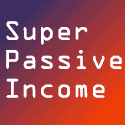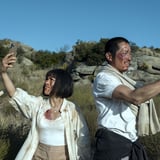Image Source: Getty / Arturo Holmes
It was a gray, freezing April afternoon in New York City, and I managed to reach the subway platform just as the M train sped away, leaving me with a 14-minute wait. It was exactly the kind of experience that might generate a flash of rage in the average public transit user, which was somewhat fitting, I thought, seeing as I was on my way to an event called “Release Your Rage.” The mysterious event, hosted by Netflix in support of their highly acclaimed show “Beef,” promised a “mindfulness experience,” though no further context was provided.
By the time I arrived in Manhattan, I was inevitably running late. I hustled through the streets, brushing past dozens of other people doing the same exact thing. Fortunately, I turned out to be exactly on time; when I arrived, a group of people was still waiting in the cold mist.
Inside, far from the hectic universe of the city’s transit matrix, I discovered a pack of media professionals milling around a stylish loft, sipping on brightly colored “Beef”-themed juices with names like “Road Ragin'” and “State of Consciousness.” Everyone was smiling and chatting, and yet we were all here for the same thing, presumably: to release some of our rage – and maybe to get a good story out of it in the process.
Image Source: Getty / Arturo Holmes
Netflix’s “Beef,” the show at the center of the event, is about people who are filled with uncontainable anger. In it, main characters Amy (Ali Wong) and Danny (Steven Yeun) first cross paths when they get into a road-rage incident. From there, things escalate wildly as they try to one-up each other, beginning with small attacks – peeing in a bathroom, covering a truck with graffiti. But eventually, their rivalry escalates into a destructive life-or-death situation. At “Release Your Rage,” I supposed, we were going to be taught healthier ways to handle anger than the strategies the “Beef” protagonists use.
Soon enough, we were all invited into a large room full of tables set up with canvases and watercolor palettes. We were going to try an art therapy exercise, a woman standing in front of the room explained. She asked us to make a box in the center of our little canvases with tape and to paint a visual representation of our anger outside of the box. Inside, we were supposed to paint something that represented inner peace.
Image Source: Getty / Arturo Holmes
As I cracked open the watercolors, I thought about my own relationship to anger, which has always been something I’ve struggled to express. Recently, I’d been having a lot of conversations about how women, and women of color in particular, tend to be socialized out of anger. As someone who naturally reverts to self-criticism whenever anger does arise, I’d been wondering: if there was a lot of anger hidden away somewhere inside of me, how could I learn to feel, integrate, and release it? As someone who’s always believed art can express things words cannot say, painting felt like a possibility.
But then, all too soon, we were being asked to complete our paintings, and someone was placing a small plant and a white ceramic pot in front of me. Now we were going to work with nature, the art therapist explained. It took me a while to coax my little green sprout into its new home. In the process, damp black soil spilled all over the table in front of me.
These plants belonged to us now, the therapist said, and we should treat them as if they were extensions of ourselves. By nurturing them, we would also be nurturing ourselves. As we worked with the dirt, laughing as soil covered the white tablecloth, I reflected on the power, and the limitations, of what we were doing. I truly believe in the healing power of the arts and the importance of reconnecting with nature, and I blame a lot of our collective suffering on the fact that we’re so detached from the natural world. We’re supposed to connect to the earth day in and day out, yet not only are we trapped in airless offices all day, but we’re expected to ignore the fact that the earth is suffering on a planetary scale.
Image Source: Getty / Arturo Holmes
But I also couldn’t help but feel that the whole process was rushed and limited in scope. I knew how privileged I was to have been able to spend part of a workday doing this, but I also wanted hours to paint out on a giant canvas. I wanted to walk through an old-growth forest and bury my hands in the soil without worrying about making a mess. Rushing us through a quick painting and planting session didn’t exactly provide an all-encompassing release. But for now, a little reminder of the healing powers of art and nature would have to do.
Soon we headed back upstairs, where we were introduced to the event’s headliner, the writer and mixed-media artist Alok Vaid-Menon. After watching a clip from “Beef,” Vaid-Menon reflected on the place rage holds in their own life. They noted that this whole event was taking place in New York City, where, they said, “the forecast reads projection. To be in New York is to constantly be experiencing other people’s displacement.” They continued: “It’s a city of so much grief that instead of being felt as grief, is weaponized as rage.”
Rage, they said, isn’t something they believe should be suppressed; instead, it’s something to be explored. “I think rage is beautiful when it’s not weaponized against other bystanders,” they added. “Rage is beautiful when it’s actually directed at the people who are oppressing us.”
“Beef” is unique, they continued, in that it explores what happens when rage isn’t directed at systemic oppression but rather at people close to us. “What I find so compelling about ‘Beef’ is that we can’t talk about rage without talking about race,” Vaid-Menon said. “As Asian Americans, often our rage gets reserved for one another because that’s easier because we’re approximate to each other. The rage that we feel is a larger grief from being in a country that only sees us as interchangeably cute or invisible . . . I think it’s very dangerous how when white men are angry, it’s seen as being assertive or continent. But when we, as women and gender nonconforming people, or we as Asian Americans, express even an iota of feeling, it’s threatening or ominous or oppressive.”
Image Source: Getty / Arturo Holmes
Instead of suppressing rage or directing it at people who happen to be close by, Vaid-Menon said, they’ve begun practicing something called emotional alchemy, a process where emotions are changed into something more valuable through deep awareness and acceptance. In some ways, they’ve been doing this from a young age.
“I had to love myself in a world that wasn’t giving that to me,” Vaid-Menon said, reflecting on growing up as a queer person of color and coming to understand the pain at the root of so much bigotry. “What I learned from a young age is that people . . . were being so cruel to me because they were templating the kind of cruelty that they were doing to themselves. What emotional alchemy helped me understand was that their violence actually had nothing to do with me. It had everything to do with their own self-imposed torture, their own clipping of their own wings. And then I got to be free.”
As Vaid-Menon spoke, everything the event was trying to do began to come together. None of this had been about sublimating rage through painting or gardening, because anger isn’t something that needs to be rooted out. Like all extreme emotions, perhaps anger needs to be moved into a bigger pot, where it can become something new – like a social-change movement or a show like “Beef,” which can make people feel seen in their rage while hopefully inspiring some empathy along the way.
Collectively, though, we’re not great at creating space for complex emotions. “Art is one of the most vital places to practice emotional alchemy, and that’s precisely why it’s being utterly underfunded,” Vaid-Menon said. “That’s precisely why it’s being censored. That’s precisely why it’s not regarded as essential work. Because art does the magic act of taking toxicity and finding treasure in it.”
Ultimately, they said, “to truly be human in this moment, we have to give ourselves permission and give one another permission to experience the full range of our contradictory emotions. We both can have gratitude and grief. We both can feel so happy and so sad at the same time. Within sorrow there is joy and within joy there is still sorrow.”
As I stepped back out into the icy wind, I took a minute to observe all the New Yorkers running around me. I thought about the grief that’s behind so much of this world’s aggression and all the love that’s behind so much of that grief. Feeling a mix of joy and sorrow, holding my new plant in my arm and trying to hold space for all of the feelings within and around me, I headed back towards the train.









